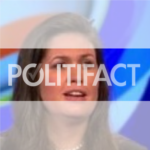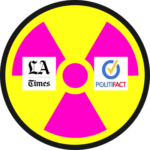House Speaker John Boehner: “On Wednesday, I outlined a responsible path forward to avert the fiscal cliff without raising tax rates. About 24 hours after I spoke, the Congressional Budget Office released a report showing that the most harmful consequences of the fiscal cliff come from increasing tax rates. According to Ernst & Young, raising the top rates would destroy nearly 700,000 jobs in our country.”
Overview
Boehner presents the findings in reports from the CBO and Ernst & Young accurately. Boehner may draw criticism for not including the fact that CBO estimates ascribe greater relative per-dollar effects to changes in government spending compared to changes in tax rates. Boehner may likewise draw criticism for not pointing out that the Ernst & Young study was specific to long run economic effects. The latter omission, along with his use of the phrase “would destroy” leaves the impression that the loss of jobs would occur sooner rather than later.
The Facts
The CBO report affirms on Page 2 that the greatest harm to next year’s Gross Domestic Product would occur as a result of tax changes:
The estimated economic effect next year of those changes in spending is about half the estimated effect of extending the expiring tax provisions, even though the budgetary impact of the changes in spending is less than one-quarter of the impact of the changes in taxes. The larger “bang for the buck” next year of the spending policies under the alternative fiscal scenario occurs because, CBO expects, a significant part of the decrease in taxes (relative to those under current law) would be saved rather than spent.
The CBO’s economic impact estimates come from “empirical studies and econometric models.” Boehner doesn’t mention that CBO estimates suggest greater relative impact from government spending than from changes in tax rates.
The study from Ernst & Young predicts harm to the economy over the long run. As noted by fact checker Glenn Kessler, the authors say “roughly two-third [sic] to three-quarters of the long-run effect is reached within a decade.” The study predicts 710,000 fewer jobs as a result of cutting the top rates, so Boehner under-reports that figure while at the same time omitting mention of the time frame in question.
Analyzing the Rhetoric
Read charitably, both references to the reports in Boehner’s statement qualify as accurate. However, both omitting the time frame and using a phrase like “would destroy” create a misleading impression with regard to the Ernst & Young study. That misleading impression, occurring as it does in a prepared statement, may assist in gaining sympathy for Boehner’s position on the fiscal cliff, so we judge that Boehner chose his words to deliberately massage the facts and encourage the audience to believe that long-run effects would occur in the short run.
A fallacy of ambiguity gives added force to Boehner’s argument for the average listener.
References
Boehner, John. “Weekly Republican Address.” John Boehner 8TH DISCTRICT OF OHIO. U.S. House of Representatives, 11 Nov. 2012. Web. 11 Nov. 2012.
“Economic Effects of Policies Contributing to Fiscal Tightening in 2013.” CBO.gov. Congressional Budget Office, 08 Nov. 2012. Web. 13 Nov. 2012.
“Study on the Long-Run Impact of Increasing Tax Rates on High-Income Taxpayers in 2013.” NFIB. National Federation of Independent Business, n.d. Web. 13 Nov. 2012.
Kessler, Glenn. “Would a Tax Hike on the Wealthy Kill 700,000 Jobs?” Washington Post. The Washington Post, 09 Nov. 2012. Web. 11 Nov. 2012.
Brundage, Amy. “Fact Check: Industry-Financed Study Gets President’s Tax Cuts Wrong.” The White House Blog. The White House, 17 July 2012. Web. 11 Nov. 2012.
“Response to White House Criticism of Ernst & Young Study.” NFIB. National Federation of Independent Business, n.d. Web. 13 Nov. 2012.







